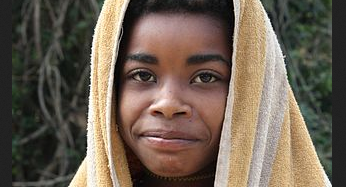Photos: Wikimedia Commons\YouTube
The economics literature concerning differing socioeconomic outcomes for native born Black Americans (descendants of slaves) versus immigrant Blacks is quite robust and explains well those differences.[1] There are differences—sometimes substantial—in educational attainment, family structure, work experience,
and entrepreneurship, which translate generally into less unemployment, higher income, and greater wealth for immigrant Blacks over native born Black Americans.
What is intriguing about this literature is that analyses typically compare Black Americans with Blacks from Africa, the Caribbean, and Central and South America. Seldom, if ever, is there a comparison of the just-delineated Blacks with Black South Asians. This may be acceptable for some because, by identifying Blacks from Bangladesh, Bhutan, India, Maldives, Myanmar, Nepal, Pakistan, and Sri Lanka as “Asian,” this immediately disassociates these Blacks from Africa. Moreover, because they are classified as “Asian” and because we group them with other nations in East and Southeast Asia, which are populated mainly by yellow or lighter skinned peoples, that grouping precludes classifying South Asians as being off African descent. Also, some will accept a purely “Asian” designation for Blacks in South Asia because of certain cultural differences between people of South Asia and people of African descent.[2]
However, the integration of anthropology, history, and economics reveals sound reasons to link South Asians with Blacks from Africa and the Western Hemisphere. But to be willing to make that linkage, it is critical to acknowledge that all people of Earth have their origin in Africa.[3]
The distinction is that peoples of Europe, East Asia, (selected) Southeast Asians, and certain Native Americans (North, Central, and South) underwent phenotypical transformations that caused them to lose much of their African phenotypical features.4 On the other hand, many South Asian people have retained many
African phenotypical features.5 There is one phenotypical feature that distinguishes Black South Asians from other Blacks around the world. The former have “straight” hair, while the latter have “tightly curled” hair. Therefore, we should ask: “Should Black South Asians and Blacks from elsewhere in the world be distinguished as different just because of the texture of their hair?” The world is woke to European “tricknology” and White Supremacy tactics based on “divide and conquer” schemes.
Should Black people of any national origin allow others (namely Europeans) to determine our racial/ethnic classifications?
At a minimum, we should ask: “What do we lose when we allow this divisiveness to affect our views, our plans, our actions, and our prospective futures?”
As we ponder this question, it is worthwhile to imagine what it would mean if African Blacks (especially those south of the Sahara Desert), Blacks in the Western Hemisphere, and Blacks from South Asia (Bangladesh, Bhutan, India, the Maldives, Myanmar, Nepal, Pakistan. and Sri Lanka) agreed to recognize our common heritage and align our interests, cooperate, and collaborate, then what a wonderful and powerful economic Black world this could be?
These Black populations exceeds 3.0 billion.
We should remember the famous quote (paraphrasing): “We should have no permanent friends or permanent enemies, only permanent interests.” In this case, we should evaluate our alliances and allegiances and realize that Black people all over the world have been kept at the margins of the global economic system. In the best-case scenario, we have only been permitted a glimpse of, and minimal opportunities to obtain, what the Western world has carved out for itself. Under these conditions, we should recognize that it is in our best interest to unify as Black people of the world to ensure our safety, security, and well-being in an increasingly violent, crisis-laden,and dying Eurocentric world.
Dr. Brooks Robinson is the founder of the Black Economics Website: https://blackeconomics.org/index.php/about-us/
References:
[1] Selected examples of this literature include: (1) K. Butcher (1994), “Black Immigrants in the United States: A Comparison with Native Blacks and Other Immigrants,” ILR Review, Vol. 4, No. 2, pp. 265-84; (2) S. Shulman and R. Smith (2005), “Immigration and African Americans,” in African Americans in the U.S.
Economy, C. Conrad et al, Editors, Rowman & Littlefield Publishers, Lanham, MD; (3) M. Anderson (2015), “Chapter 1: Statistical Portrait of the U.S. Black Immigrant Population,” Pew Research Center; https://www.pewresearch.org/social-trends/2015/04/09/chapter-1-statistical-portrait-of-the-u-s-black-immigrant-population/ (Ret. 092822); and (4) C.Tamir (2022), “Key findings about Black immigrants in the U.S.,” Pew Research Center; https://www.pewresearch.org/fact-tank/2022/01/27/key-findings-about-black-immigrants-in-the-u-s/
[2] Here, by “culture” we mean religion. It is common knowledge that, like Africa, Christian and Islamic adherents reside in South Asia. (Notably, these two religions have foundations in Africa.) However, very important religions in South Asia are Hinduism and Buddhism, which are not practiced generally on the
African Continent. Finally, many Africans practice “traditional” religions, which are not practiced in South Asia.
[3] C. A. Diop’s (1974), The African Origin of Civilization: Myth or Reality builds an excellent and well documented case concerning this topic. In addition, it is widely accepted today that Africa is the origin of modern man.
[4] Although man first appeared in Africa, migrated to other parts of the Earth, and evolved various phenotypical features, there is only one race—the human race. However, in their attempt to distinguish humans with differing phenotypical features, some anthropologists have labeled three major “racial groups:” Negroids (Blacks of Africa); Caucasoids Whites of Europe); and Mongoloids (Yellow/Red of Asia and the Americas). In addition, some anthropologists have recognized two other “racial groups:” Capoids (Hottentots/Bushmen) and Australoids (Aborigine and Papuans). See “Historical Race Concepts;” Wikipedia; https://simple.wikipedia.org/wiki/Historical_race_concepts (Ret. 092822).
[5] Some anthropologists and historians have linked Dravidians, a major existing population group in South Asia, to an earlier and important Indus Valley (Harappan) Civilization, which is logically believed to have been seeded by people of African origin (see the C.A. Diop reference in footnote 3 and R. Rashidi (2008),
“The African Presence in India;” https://tseday.wordpress.com/2008/08/24/the-african-presence-in-india-by-runoko-rashidi/ (Ret. 092922)). Also consider R. Rashidi’s (1992) mention of the currently existing Mundas of East/Central India and Vedda populations of Sri Lanka as “Black People” with African phenotypical features (see “Men Out of Asia: A Review and Update of the Gladwin Thesis,” in African Presence in Early America, I. Van Sertima, Editor, Transactions Publishers, New Brunswick, NJ).









